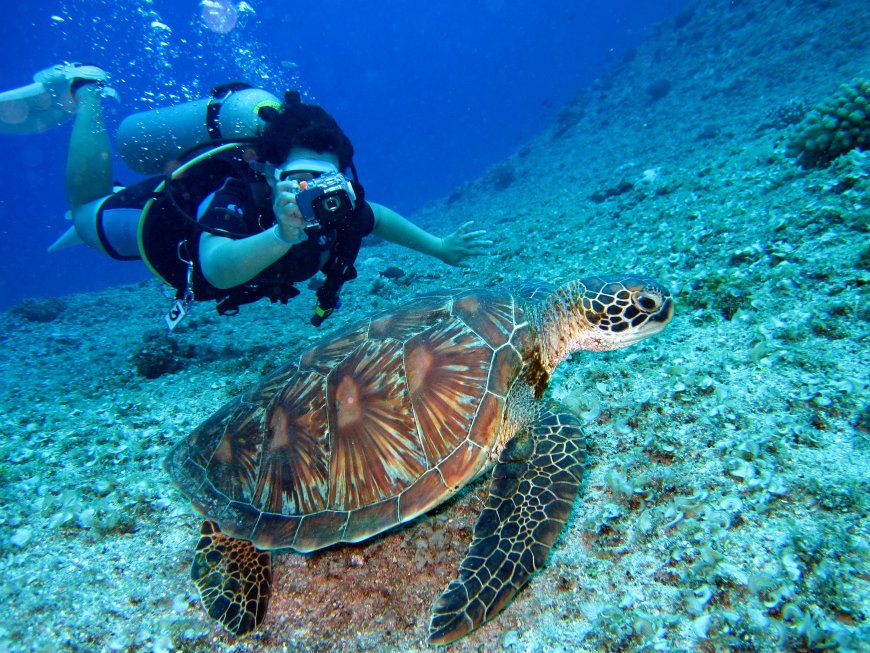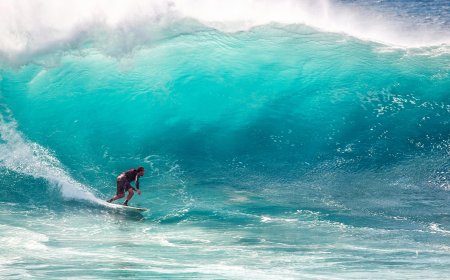Safety Guidelines for Scuba Diving
Safety guidelines in diving are of utmost importance to ensure the safety of divers during their underwater experience. Every diver should plan carefully before diving, considering environmental conditions, currents, and water depth. It is also essential to use appropriate and regularly inspected equipment and ensure the availability of all necessary tools such as diving mask, buoyancy compensator, and regulator. Diving with qualified instructors is a crucial step to guarantee the safety of divers, as instructors can provide necessary guidance and assistance in case of emergencies. Divers should not overlook learning basic safety techniques, such as controlling air pressure, proper breathing, and communicating with the dive team through agreed-upon signals. Diving safety lies in good planning, using proper equipment, and diving with qualified instructors, ensuring a safe and enjoyable underwater experience.

Safety guidelines in diving are of utmost importance to ensure the safety of divers during their underwater experience. Every diver should plan carefully before diving, considering environmental conditions, currents, and water depth. It is also essential to use appropriate and regularly inspected equipment and ensure the availability of all necessary tools such as diving mask, buoyancy compensator, and regulator.
Diving with qualified instructors is a crucial step to guarantee the safety of divers, as instructors can provide necessary guidance and assistance in case of emergencies. Divers should not overlook learning basic safety techniques, such as controlling air pressure, proper breathing, and communicating with the dive team through agreed-upon signals.
Diving safety lies in good planning, using proper equipment, and diving with qualified instructors, ensuring a safe and enjoyable underwater experience.
Safety Guidelines for Scuba Diving
Here are further details about the basics of diving safety
1. Thorough Dive Planning
- Before starting a dive, divers should ensure they review the surrounding weather and environmental conditions, such as temperature, weather conditions, and sea currents.
- Divers should also identify the appropriate dive site, considering water depth and safe diving areas.
2. Using Proper Equipment
- Divers should wear essential diving equipment such as wetsuits, weight belts, diving masks, and regulators.
- All equipment should be inspected and maintained before use to ensure its safety and the safety of divers.
3. Learning Basic Techniques
- Divers should learn how to control air pressure and breathe properly underwater.
- Divers should also learn how to effectively communicate with the dive team, either through hand signals or auditory signals.
4. Intensive Training
- Divers should undergo comprehensive and intensive training from qualified diving instructors, learning how to deal with underwater emergencies and how to act quickly and effectively in such situations.
5. Conscious Thinking and Environmental Preservation
- Divers should exercise consciousness and wisdom while diving, avoiding situations that may put themselves and others at risk.
- It is important to preserve marine environments and avoid causing harm to marine life or coral reefs.
By following these basics, divers can enjoy a safe and enjoyable diving experience underwater, ensuring their safety and the safety of others.
Ensuring Diver Safety
1. Using Proper Equipment
- Providing suitable and regularly inspected diving equipment is a fundamental part of ensuring diver safety.
- Divers should ensure they wear appropriate diving suits for diving conditions and have the right weight belt to control buoyancy underwater.
- All equipment should be inspected and maintained before use to ensure there are no defects that may affect diver safety.
2. Intensive Training
- Offering comprehensive and intensive training to divers by qualified instructors is the foundation of ensuring their safety.
- Intensive training includes learning safe diving techniques, including controlling air pressure, proper breathing, and dealing with underwater emergencies.
3. Communication and Coordination
- Divers should communicate effectively with the dive team before and during the dive.
- The team should establish pre-agreed signals and instructions for effective communication underwater.
4. Thorough Planning
- Divers should plan their dives carefully by reviewing environmental conditions and assessing suitable dive locations.
- Thorough planning also includes devising a plan to deal with any potential emergencies.
5. Conscious and Responsible Thinking
- Divers should be aware of their responsibilities towards their personal safety and the safety of others while diving.
- They should refrain from taking unnecessary risks and maintain safe behaviors underwater.
By following these steps and measures, divers can enjoy a safe and rewarding diving experience, ensuring their safety and the safety of others at all times.
The Role of Qualified Instructors in Diving
The role of qualified instructors in diving plays a crucial role in ensuring diver safety and providing a safe and enjoyable diving experience. They are considered an essential part of the training and qualification process for new divers. Now, let me elaborate on their role
1. Providing Theoretical Education
- Qualified diving instructors provide theoretical education to beginner divers, including underwater physics and chemistry concepts, breathing techniques, safety, and emergency management.
- This ensures that divers are fully aware of potential risks and necessary preventive measures to ensure their safety.
2. Practical Training and Skills
- Instructors train divers on basic skills and techniques necessary for safe diving, such as air pressure control, underwater communication, and emergency management.
- This is done through practical training sessions in pools or shallow waters before moving to deep waters.
3. Offering Advice and Guidance
- Qualified instructors provide personalized advice and guidance to each diver based on their experience level and skills.
- They clarify best practices and safe behaviors underwater and how to avoid risky situations.
4. Emergency Management and Intervention
- Instructors receive specialized training in emergency management and intervention in underwater emergencies.
- They are prepared to act quickly and effectively in emergency situations such as loss of consciousness or drowning.
5. Providing Psychological Support
- Instructors offer psychological support and encouragement to divers during their experience, whether they are beginners or professionals.
- They help alleviate anxiety and tension and increase self-confidence underwater.
The role of qualified instructors in diving is essential to ensure diver safety and provide a safe and enjoyable diving experience. They play a vital role in educating and training divers on safety and safe behavior underwater.
How to Handle Emergencies While Diving
1. Stop and Think
- In the event of an emergency while diving, divers should stop moving and think consciously.
- They should quickly assess the situation and determine the next steps based on the circumstances and the problem at hand.
2. Communication
- Divers should communicate with the dive team using agreed-upon signals, whether through hand gestures or auditory signals.
- Information about the emergency situation should be exchanged, and the next steps should be determined quickly and effectively.
3. Check Equipment
- Divers should check the safety and functionality of their diving equipment, such as the regulator, diving mask, and buoyancy compensator, and take necessary actions to correct any equipment problems.
4. Breathe Calmly
- Divers should breathe calmly and regularly to maintain calmness and avoid panic.
- Breathing calmly helps conserve air consumption and extends the available time to deal with the emergency.
5. Follow Emergency Procedures
- Divers should adhere to pre-agreed emergency procedures with the dive team, such as instructions for safely ascending to the surface and dealing with potential problems like loss of visibility or low air supply.
6. Stay with the Team
- Divers should stay with the dive team and collaborate with them during the emergency, facilitating the rescue process and reducing individual risk.
7. Report the Situation
- If divers are unable to handle the emergency situation alone, they should report the situation to the external support team or the relevant authorities for assistance.
Reacting quickly and effectively to emergencies while diving helps preserve diver safety and prevents the situation from worsening, contributing to a safe and enjoyable diving experience for everyone.
Healthy Breathing, Air Pressure Control, and Diving Safety
Healthy breathing and air pressure control are two essential elements in ensuring the safety of divers during their underwater experience. Let's discuss in detail how healthy breathing and air pressure control contribute to diving safety
1. Healthy Breathing
- Healthy breathing in diving requires focusing on proper breathing techniques, which helps maintain oxygen levels in the body and avoids nitrogen gas toxicity.
- Divers should breathe slowly and deeply, using all parts of the lungs evenly, to ensure sufficient oxygen intake and avoid feelings of tension and anxiety.
2. Air Pressure Control
- Air pressure control is crucial to ensuring diver safety, as high pressure can lead to serious health problems such as lung overexpansion or nitrogen narcosis.
- Divers should regularly monitor air pressure in the dive tank and ensure it remains within safe limits.
- They should breathe regularly and expand their breaths evenly to maintain a balanced air pressure within the body.
3. Impact of Breathing and Air Pressure on Diving Safety
- Healthy breathing and proper air pressure control contribute to avoiding serious health problems underwater, such as decompression sickness, arterial gas embolism, and lung overexpansion.
- By maintaining a proper balance of air pressure in the body and breathing correctly, divers can enjoy a safe and enjoyable diving experience without exposing themselves to risks.
Healthy breathing and air pressure control play a crucial role in diver safety, helping them avoid health issues and enjoy diving safely and thrillingly.
How to Communicate Effectively in a Dive Team
Effective communication in a dive team is crucial for ensuring the safety of divers and achieving enjoyable and safe diving experiences. Let's discuss in detail how to communicate effectively in a dive team
1. Use agreed-upon signals
- Dive team members should learn and use agreed-upon dive signals effectively, whether they are hand signals or auditory signals.
- Basic dive signals include signals for direction, staying in a specific location, signaling danger, and requesting assistance.
2. Direct communication
- Direct communication between team members should be easy and effective, whether through hand signals or speaking via a voice communication device.
- Direct communication allows for the rapid and accurate exchange of information, enabling the team to react immediately in emergencies or hazardous situations.
3. Visual communication
- Visual communication, such as hand signals, helps improve the team members' understanding of instructions and guidance.
- Team members should train to express themselves clearly and accurately using visual dive signals.
4. Pre-planning
- Pre-dive planning helps in identifying the necessary procedures and instructions, making communication within the team more effective.
- Team members should coordinate pre-planning and exchange information about plans and adopted strategies to ensure diving safety.
5. Continuous communication
- Communication should be continuous throughout the dive, even in the absence of problems and emergencies.
- Continuous communication can enhance the sense of safety and trust among team members, helping to achieve smoother and more comfortable diving experiences.
Effective communication in a dive team is vital for ensuring the safety of divers and achieving a safe and comfortable diving experience.
Selecting and maintaining equipment to ensure diver safety
Selecting and maintaining equipment are crucial aspects of ensuring diver safety during their underwater experience. Let's delve into detail about how to select and maintain equipment to ensure diver safety
1. Choosing the Right Equipment
- Divers should select suitable equipment based on the diving conditions they intend to encounter, such as temperature, depth, and water type.
- They should choose from a variety of equipment, including wetsuits, breathing apparatus, and small devices like masks and watches.
2. Ensuring Equipment Fit
- Equipment should fit comfortably and suit the diver's size and shape to ensure comfort and free movement underwater.
- Divers should test the equipment before diving to ensure proper fit and functionality.
3. Verifying Equipment Quality
- Divers should opt for high-quality equipment made from durable and corrosion-resistant materials.
- Researching reputable brands, reading reviews, and consulting experts can help in selecting the best equipment.
4. Equipment Maintenance
- Divers should have a regular maintenance schedule for their equipment, including cleaning, inspecting, and repairing them regularly.
- Critical components like breathing apparatus and cylinder valves should be routinely maintained to ensure efficient and safe operation.
5. Replacing Faulty Equipment
- In case of equipment damage or deterioration, divers should promptly replace them with new or repaired equipment.
- Divers should not risk using faulty equipment, as it may lead to accidents and serious health issues.
6. Training on Equipment Use
- Divers should be trained in the proper and effective use of equipment to ensure safe performance underwater.
- Training should include inspecting equipment before diving and adjusting it correctly for safety.
Selecting the right equipment and maintaining it regularly play a crucial role in ensuring diver safety during their experience, contributing to risk avoidance and achieving a safe and enjoyable diving experience.
Methods and techniques to ensure diver safety
Ensuring diver safety relies on utilizing appropriate methods and techniques during dive preparation and underwater activities. Let's discuss in detail some of the methods and techniques that contribute to diver safety
1. Comprehensive Training
- Comprehensive training in diving techniques and safety procedures is essential to ensure diver safety.
- This training includes both theoretical and practical aspects of diving, covering emergency procedures and how to deal with them.
2. Pre-dive Planning
- Pre-dive planning involves conducting pre-site studies, assessing potential locations and conditions, identifying risks, and conducting appropriate weather, tide, and current assessments.
- Exit points, meeting points, and emergency plans should also be identified before starting the dive.
3. Proper Equipment Use
- Divers must use equipment correctly according to manufacturer instructions and received training.
- This includes regularly inspecting and maintaining equipment to ensure its safety and readiness for use.
4. Effective Communication
- Diving requires teamwork and communication among team members, both on the surface and underwater.
- Information exchange about conditions, situations, and potential issues among team members using standardized diving signals is crucial.
5. Healthy Breathing and Pressure Control
- Divers must breathe properly and control air pressure within the body to avoid health issues such as gas saturation in the blood.
- This includes regular, deep, slow breathing and relaxation during dives.
6. Emergency Response
- Divers should receive sufficient training on how to respond to emergencies such as loss of consciousness or air depletion.
- This training includes using rescue equipment and organizing rescue operations safely and effectively.
Utilizing appropriate methods and techniques, along with comprehensive training and pre-dive planning, helps ensure diver safety and mitigate risks during diving activities.
Summary
Safety guidelines in scuba diving are essential to ensure the safety of divers and provide a safe and thrilling diving experience. These guidelines include a set of procedures and instructions that must be followed closely before, during, and after diving. They encompass thorough preparation for diving through comprehensive training on diving techniques, appropriate equipment, and advance dive planning. Preparation also involves maintaining effective communication among team members and ensuring understanding of emergency procedures and proper emergency response.
Additionally, safety guidelines in diving require attention to the health and physical fitness of divers, as well as adherence to responsible diving principles and environmental regulations. These guidelines must be strictly implemented to reduce the risks of injury and accidents underwater, ensuring divers' enjoyment of the diving experience with maximum safety.
Overall, safety guidelines in scuba diving are fundamental for preserving divers' safety and enhancing diving safety overall. These guidelines provide the necessary framework for a safe and enjoyable diving experience, contributing to the promotion of the excitement and popularity of this fantastic sport.
Sources
1. PADI (Professional Association of Diving Instructors)
- The website of the Professional Association of Diving Instructors provides numerous resources and articles on diving safety.
2. DAN (Divers Alert Network)
- An organization that offers in-depth information about diving safety and provides articles and tips for divers.
3. Scuba Diving Magazine
- A magazine specialized in scuba diving that publishes articles and tips on safety and advanced diving techniques.
What's Your Reaction?



































































































































































